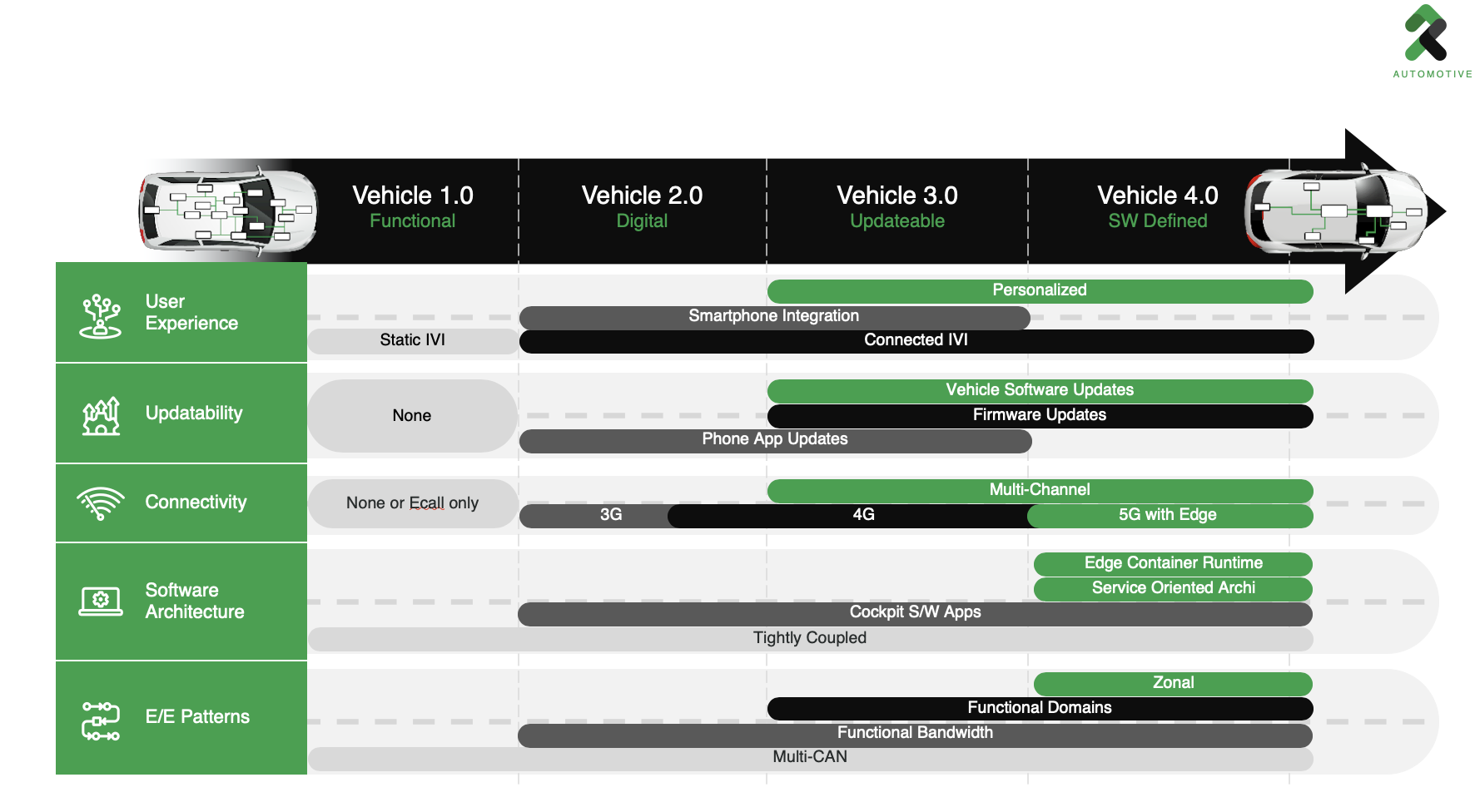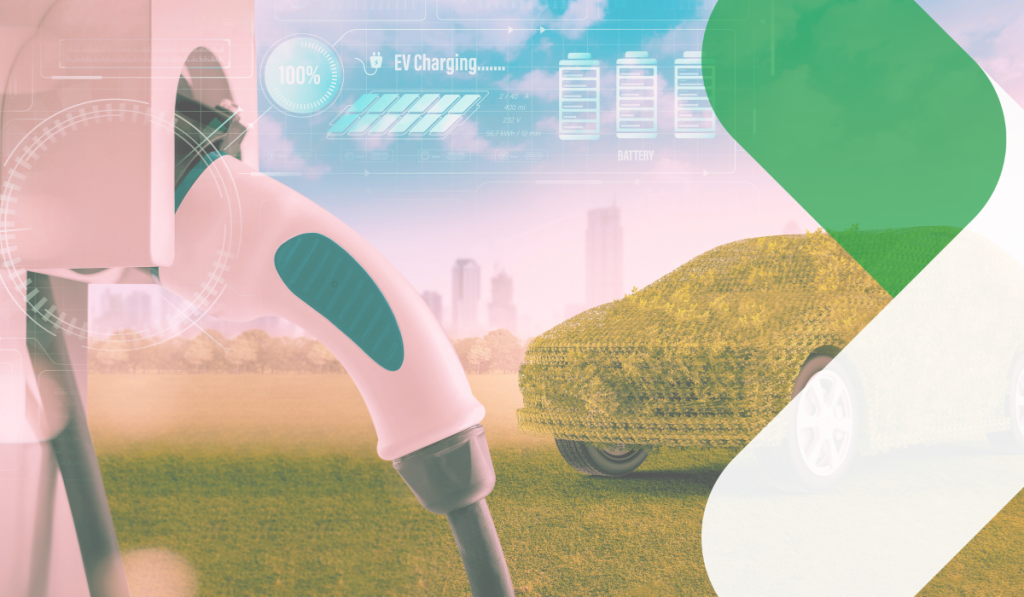
AI-Powered LiDAR: A New Era of Perception
How AI and ML enhance LiDAR technology by overcoming data processing challenges, enabling advanced applications in autonomous systems, robotics, and 3D mapping, and more.
According to recent market statistics, the global Software Defined Vehicle market is expected to grow from $291.7 billion in 2024 to $489.7 billion by 2030, marking a 9% CAGR. This growth is driven by the increasing demand for advanced features, strict safety regulations, and significant investments in research and development (R&D). Additionally, the integration of 5G technology and edge computing is set to enhance the capabilities of SDVs, making them more responsive and efficient.
This article delves into the intricacies of Software Defined Vehicles, exploring their evolution, key components, and the challenges faced in transitioning from traditional cars.
Software Defined Vehicles are vehicles where most functionalities are controlled by software rather than hardware. This paradigm allows dynamic updates and enhancements to vehicle operations through software changes, like how smartphones receive updates. SDVs typically include key components such as advanced in-vehicle infotainment systems, connectivity modules, autonomous driving capabilities, and telematics. These components are interconnected through a robust software architecture, enabling real-time data processing and seamless communication between the vehicle and external cloud services.
SDVs offer significant advantages over traditional vehicles, revolutionizing how we interact with and perceive automotive technology. One of the primary benefits is the ability to perform over-the-air (OTA) updates, which allow manufacturers to improve vehicle performance, add new features, and enhance safety protocols without requiring a physical visit to a service center. This not only extends the lifecycle of vehicles but also ensures they remain up to date with the latest technological advancements and regulatory requirements.
SDVs are not just about convenience and technology, they also significantly contribute to increased safety and efficiency. ADAS and autonomous driving features are integral to SDVs, reducing the likelihood of accidents and enhancing overall road safety. The integration of AI and machine learning enables these vehicles to adapt to different driving conditions, learn from user behavior, and optimize performance continuously.
The impact of SDVs on the automotive market is not just significant; it’s profound. The global SDV market is growing fast, highlighting a substantial shift towards software-centric vehicle architectures. This shift is not just a trend, it’s a transformation that is expected to drive significant changes in business models, with a growing emphasis on software development, technology modernization, cybersecurity, and data management within the automotive industry. As automakers and OEMs navigate this evolving landscape, the focus will increasingly be on providing innovative software solutions that enhance vehicle functionality and user experience.
SDV journey reflects a significant transformation in the automotive industry, transitioning from basic functionalities to highly sophisticated, software-driven systems. Each stage represents a leap in technology and integration, showcasing the progression from hardware-centric vehicles to those dominated by advanced software architectures.
The first generation of vehicles, often called Vehicle 1.0, primarily focused on delivering fundamental functionalities with static in-vehicle infotainment (IVI) systems. These cars had limited connectivity and updatability, and their primary objective was to provide basic driving capabilities and entertainment options. The technology stack in these vehicles was primarily hardware-driven, with little to no reliance on software for performance improvements or feature enhancements. The infotainment systems were isolated, lacking the ability to interact with external systems or receive updates over the air. This era laid the foundation for more sophisticated advancements by highlighting the limitations of a hardware-centric approach.
The evolution to Vehicle 2.0 marked the digital transformation of automobiles, characterized by integrating smartphones and introducing basic software updates via mobile applications. This stage brought about 3G connectivity, enabling vehicles to connect with external devices and services. Integrating smartphone functionalities allowed drivers to access navigation, music, and communication apps directly through the vehicle’s infotainment system. However, updates still needed to be improved, often requiring manual intervention or visits to service centers. This stage started a shift towards software dependence, laying the groundwork for more seamless and integrated digital experiences in vehicles.
Vehicle 3.0 represented a significant leap forward with the start of connected IVI systems and the capability for firmware updates. Enhanced software architectures emerged, supporting the development and deployment of cockpit software applications. The introduction of 4G connectivity further expanded the scope of connected services, enabling real-time data exchange and more frequent updates. Vehicles in this category could receive software updates over the air, significantly improving functionality and user experience without requiring physical interventions. This era also saw a rise in implementing advanced driver assistance systems (ADAS), which leveraged software to enhance safety and performance.
The current generation, Vehicle 4.0, fully embraces the concept of Software Defined Vehicles, offering a highly personalized user experience driven by comprehensive software updates and the integration of 5G connectivity coupled with edge computing. Advanced software architectures, including edge container runtimes and service-oriented architectures, enable a modular and flexible approach to vehicle functionality. The evolution of electrical/electronic (E/E) patterns from functional domains to zonal architectures has further optimized the efficiency and scalability of these systems. SDVs in this era can dynamically adapt to user preferences, driving conditions, and emerging technologies, offering a genuine next-generation automotive experience.

Software Defined Vehicle Evolution
The transition to SDVs marks a revolutionary shift in the automotive industry, promising enhanced functionalities and continuous improvements through software updates. However, this transformation has its challenges.
As SDVs become more connected, securing vehicle-to-cloud communication has become a critical challenge. The vast amounts of data exchanged between the vehicle and external servers must be protected against cyber threats to ensure the vehicle’s and its occupants’ safety and privacy. The automotive industry is increasingly adopting the Automotive Open System Architecture (AUTOSAR) to standardize security protocols and enhance the resilience of SDVs against cyber-attacks. Implementing robust encryption methods, intrusion detection systems, and continuous monitoring is essential to safeguard the integrity of vehicle-to-cloud communication. As vehicles become more connected and autonomous, ensuring robust cybersecurity measures will be paramount to gaining consumer trust and complying with regulatory standards.
With a proactive approach to cybersecurity, rinf.tech has partnered with NXP Semiconductors and Bitdefender to strengthen the safety of connected vehicles. Through NXP’s OrangeBox platform, this collaboration integrates Bitdefender’s security solutions into the automotive environment. Our joint effort aims to protect autonomous and connected cars from cyber threats, addressing the increasing complexity of cybersecurity in the connected vehicle market. The solution ensures the protection of sensitive data, reducing safety risks for drivers. Moreover, it is expected to significantly benefit individual consumers with secure connected vehicles, insurance companies by reducing cybersecurity risks, and OEMs by enhancing security, minimizing consumer risk, and generating recurring revenue.
Ensuring end-to-end functional safety in SDVs is another significant challenge. Unlike traditional vehicles, where safety features are primarily hardware-based, SDVs rely heavily on software to manage critical safety functions. This requires rigorous testing and validation to ensure all software components work seamlessly together to maintain vehicle safety. The automotive industry is adopting new safety standards, among which are:
As SDVs evolve, continuous efforts are required to update these standards and ensure they cover the complexities introduced by advanced software functionalities and autonomous driving capabilities.
The transition to SDVs is driving a fundamental shift in automotive business models. Traditional models based on one-time vehicle sales are giving way to new revenue streams such as subscription services, software upgrades, and data monetization. These changes present both opportunities and risks for automotive manufacturers. Companies must adapt to these new models by investing in software development capabilities and establishing partnerships with technology providers. For instance, partnerships between automakers and tech companies are becoming more common, as seen in collaborations like the one between General Motors and Microsoft for data, AI, and IoT services. Navigating these changes requires a strategic approach to balance the initial investment costs with the long-term benefits of recurring revenue streams.
The concept of “Feature as a Service” transforms how consumers interact with their vehicles. Instead of purchasing a vehicle with a fixed set of features, consumers can now subscribe to or purchase additional features as needed. This approach allows for continuous improvement and customization of the driving experience, but it also requires a robust infrastructure to support seamless updates and feature rollouts. Tesla’s over-the-air software updates exemplify this model, allowing for the addition of new functionalities and performance enhancements post-purchase. However, this model also raises consumer expectations for ongoing support and rapid feature deployment, challenging automakers to maintain a high level of service and innovation.
To keep pace with the rapid advancements in software technology, the automotive industry must adopt agile development methodologies and continuous integration and delivery (CI/CD) practices. This approach enables faster development cycles, quicker updates, and more responsive adaptation to market demands. Implementing agile methodologies requires a cultural shift within organizations and significant investments in new tools and training. Companies like Volkswagen are investing heavily in agile practices and digital transformation to stay competitive in the evolving automotive landscape. Embracing agile development is crucial for delivering high-quality software updates and maintaining the technological edge required for SDVs.
Decoupling hardware and software development cycles is essential for accelerating innovation and reducing time-to-market for new features. Traditionally, hardware and software development have been closely intertwined, leading to longer development times and less flexibility. By decoupling these processes, manufacturers can update software independently of hardware changes, allowing for more frequent and flexible improvements. However, this approach also challenges ensuring compatibility and seamless integration between the hardware and software components. Companies like BMW are pioneering this approach by developing modular software platforms that can be updated independently of the vehicle’s hardware.
The increasing complexity and dependency on System On Chip (SoC) technologies present significant challenges for SDVs. SoCs, which integrate various electronic components into a single chip, are crucial for enabling advanced functionalities such as autonomous driving and real-time data processing. Leading technology companies like Qualcomm and NVIDIA are at the forefront of developing these chips, which offer powerful computing capabilities but require sophisticated integration and optimization within the vehicle’s architecture. Managing the complexity and ensuring the reliability of SoCs is vital for the performance and safety of SDVs.
The shift to new electrical/electronic (E/E) architectures is necessary to support the advanced functionalities of SDVs. Traditional E/E architectures, based on functional domains, are being replaced by zonal architectures that allow for more efficient data processing and reduced wiring complexity. This transition enhances the scalability and flexibility of vehicle systems, enabling more sophisticated software integration and real-time data management. Companies like Volkswagen and BMW are actively developing zonal architectures to support their next-generation SDVs, ensuring their vehicles can handle the increasing demands of software-driven functionalities.
Original Equipment Manufacturers (OEMs) play a pivotal role in developing and maintaining SDVs. The transition to software defined architectures requires OEMs to reorganize their operations, fostering closer collaboration between automotive software developers and traditional engineering teams. This shift involves significant investments in talent acquisition, training, and developing new software tools and platforms. OEMs like Ford and General Motors are leading the way by establishing dedicated software development divisions and forming strategic partnerships with technology companies. These organizational changes are critical for OEMs to remain competitive and drive innovation in the SDV market.
Developing and maintaining a full vehicle software stack, including OEM-specific operating systems, presents unique challenges. An OEM-specific OS allows manufacturers to optimize the performance and security of their vehicles, providing a tailored user experience. However, creating such an OS requires substantial resources and expertise in software development and cybersecurity. Companies like Tesla have developed proprietary operating systems to support their vehicles’ advanced features and ensure seamless integration with hardware components. Maintaining a full vehicle software stack also involves continuous updates and improvements, requiring a robust CI/CD pipeline and dedicated software development teams.
The future of Software Defined Vehicles is expected to bring significant advancements, driven by rapid technological progress and evolving market demands.
Key trends include the integration of AI and machine learning to enhance vehicle autonomy and personalization. The potential of AI-powered systems to enable cars to learn from user behavior, optimize performance, and predict maintenance needs, making driving safer and more efficient, is truly exciting. According to IBM, the use of AI in SDVs will extend beyond driving assistance to include cybersecurity, where AI models will analyze incoming security threats and respond in real time.
Another critical trend set to revolutionize the future of SDVs is the expansion of 5G connectivity. This advancement, with its potential to facilitate faster and more reliable communication between vehicles and cloud services, is truly inspiring. This enhanced connectivity will support advanced features such as real-time traffic management, over-the-air updates, and improved vehicle-to-vehicle (V2V) and vehicle-to-infrastructure (V2I) communication. The deployment of 5G technology is expected to boost the capabilities and adoption rates of SDVs significantly.
The shift towards electric vehicles is also a significant factor in the future of SDVs. Integrating software systems in EVs will optimize battery management, improve charging efficiency, and provide more accurate range predictions. As EV adoption grows, the synergy between electric and software-defined technologies will drive further innovations in the automotive sector, offering hope for a more sustainable future.
The evolution of Software Defined Vehicles represents a transformative journey in the automotive industry, marked by the transition from hardware-centric to software-driven architectures. This shift brings countless benefits, including enhanced safety, personalized user experiences, and continuously updating and improving vehicle functionalities. However, it also presents several challenges, such as ensuring robust cybersecurity, maintaining end-to-end functional safety, and adapting to new business models.
Addressing these challenges requires a strategic approach and collaboration across the automotive ecosystem. Manufacturers, technology providers, and regulatory bodies must work together to develop and implement standards that ensure the safe and efficient operation of SDVs. Furthermore, ongoing investment in research and development is crucial to keep pace with technological advancements and consumer expectations.
We at rinf.tech are at the forefront of this transformation, leveraging our extensive expertise in automotive software development to drive innovation and excellence in the SDV market. With a focus on advanced software architectures, cybersecurity solutions, and agile development methodologies, our automotive experts are well-equipped to help automotive manufacturers navigate the complexities of SDVs. Our commitment to delivering cutting-edge solutions ensures that our clients can capitalize on the opportunities presented by this new era of automotive technology, fostering safer, smarter, and more connected vehicles for the future.
Let’s talk.

How AI and ML enhance LiDAR technology by overcoming data processing challenges, enabling advanced applications in autonomous systems, robotics, and 3D mapping, and more.

Offering insights into how the latest AI advancements will impact consumers, manufacturers, and the broader environment in 2025 and beyond.

Showcasing the environmental and economic benefits of integrating sustainable materials and robust recycling practices into the automotive value chain.